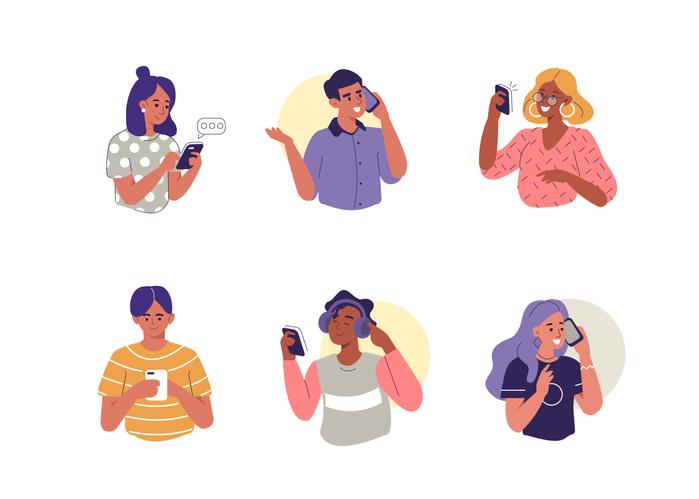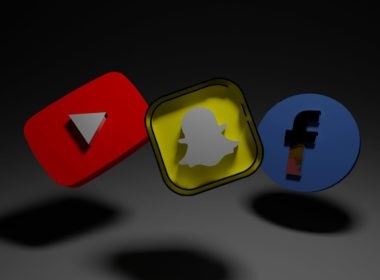This article provided you with a basic understanding of buyer personas, as well as case studies and examples to help you understand how to create and use buyer personas for successful marketing campaigns.
Introduction
Are you looking for a way to supercharge your marketing efforts and reach your target audience more effectively? Try harnessing the power of understanding and using the buyer personas. By understanding your target audience at a deeper level, you can create targeted marketing campaigns that resonate with their unique needs and interests. In this article, you will understand how to create and use buyer personas for successful marketing campaigns, with real-life examples and case studies to guide you along the way. Buckle up and get ready to take your marketing to the next level!
What are buyer personas?
Buyer personas are fictional representations of a brand’s ideal customer, based on demographic and psychographic data. They are a crucial tool for marketers, as they help to understand the target audience and their buying behavior, allowing for more effective and efficient marketing campaigns.

Why are Buyer Personas Important?
A thorough understanding of your target audience is critical for successful marketing campaigns. Buyer personas provide a detailed picture of your ideal customer, including their age, income, education level, interests, pain points, and purchasing behavior. This information can be used to tailor your marketing messages and campaigns to the specific needs and interests of your target audience.
How to Create Buyer Personas?
To create buyer personas, start by conducting thorough research on your target audience. This may include surveys, customer interviews, and analyzing customer data. Once you have gathered information on your target audience, you can use this data to create a detailed profile of each buyer persona.
When creating your buyer personas, be sure to include both demographic and psychographic information. Demographic information includes things like age, gender, income, and education level. Psychographic information delves into the customer’s values, interests, and motivations.
Here are the steps to create a buyer persona:
- Conduct research: Start by gathering information on your target audience. This can include surveys, customer interviews, and analyzing customer data. By using these methods, you can gather customer data and move on to the second step of the process, i.e. customer segmentation as per their common characteristics.
- Identify common characteristics: Analyze the data you have gathered to identify common characteristics and trends among your target audience. For e.g. from data, you get to know that a certain group of people prefer products that are beautifully packaged, or there is a group of people who are very price conscious, no matter how the quality of the product.
- Create a profile template: Create a template that includes demographic information (age, gender, income, education) and psychographic information (values, interests, motivations) for each buyer persona.
- Develop personas: Using the information you have gathered, develop a detailed profile for each buyer persona, including a name, profile picture, and a description of their background, behavior, and goals.
- Validate customer data: Verify the accuracy of your buyer personas by checking it against real customer data, such as customer feedback, sales data, and other relevant sources.
- Refine and update: Regularly review and update your buyer personas based on new insights and data to ensure they continue to accurately represent your target audience.
By following these steps, you can create comprehensive and accurate buyer personas that will provide valuable insight into your target audience and inform your marketing efforts.
Using Buyer Personas in Marketing Campaigns
Once you have created your buyer personas, they can be used to inform a variety of marketing efforts, including:
- Targeted Messaging: Using the information from your buyer personas, you can tailor your marketing messages to resonate with each specific target audience. For e.g. A popular consumer goods brand in India wanted to target young, health-conscious individuals with their new line of healthy snacks. They created a buyer persona of a young professional who is always on the go and has a busy lifestyle but still prioritizes healthy eating. Their targeted messaging focused on the convenience and health benefits of their snacks, appealing to this buyer persona’s busy schedule and health-conscious mindset.
- Campaign Segmentation: By understanding the unique needs and interests of each buyer persona, you can create targeted campaigns for each segment of your target audience. For example, A leading Indian bank wanted to target small business owners who were looking for loans to grow their businesses. They created a buyer persona of a busy, hardworking entrepreneur who is looking for a reliable and flexible loan solution. Their targeted messaging focused on the ease of applying for loans online, quick approval times, and flexible repayment options, appealing to the needs and priorities of this buyer persona.
- Content Creation: Your buyer personas can inform the type of content you create, ensuring that it is relevant and appealing to your target audience. First of all, identify the buyer persona and create content that appeals to your buyer persona. For example, if your buyer persona is a busy professional looking for an online digital marketing courseonline digital marketing course, you can create blog posts, infographics, and videos that educate them on the benefits of taking an online course on digital marketing and how it can benefit them to build their successful career in the digital marketing industry.
- Product Development: Your buyer personas can also provide valuable insight into the features and benefits that are most important to your target audience, helping to inform product development decisions. By creating detailed buyer personas, companies can ensure that they are developing products that meet the specific needs of their target market, leading to increased customer satisfaction and loyalty. Here is an example:
A company that produces sports equipment wants to develop a new line of yoga mats. To ensure that they are developing a product that will meet the needs of their target market, the company creates a buyer persona of a yoga enthusiast. This buyer persona includes information about their age, income, occupation, hobbies, and pain points related to their yoga practice. Based on this information, the company learns that the target audience is looking for a durable, non-slip yoga mat that is easy to transport and store. The company uses this information to develop a line of lightweight, foldable yoga mats that are made from high-quality, non-slip materials. The mats are also designed with a convenient carrying strap, making them easy to transport to and from yoga classes. By using a buyer persona in its product development process, the company is able to create a product that meets the specific needs of its target market, leading to increased customer satisfaction and sales.
More Examples and Case Studies
Here are a few examples of how brands have used buyer personas to improve their marketing efforts:
Hubspot
Hubspot, a leading marketing and sales software company, used buyer personas to better understand their target audience and create more effective marketing campaigns. They created detailed buyer personas for each of their target audience segments, which helped them create targeted content, product features, and sales messages that resonated with their audience.
Coca-Cola
Coca-Cola, the world’s largest beverage company, used buyer personas to better understand the needs and behaviors of its target audience. By creating buyer personas, they were able to create targeted marketing campaigns that reached their audience more effectively and increased sales.
Here is an example of how Coca-Cola used buyer personas to create a targeted marketing campaign:
Campaign: “The ultimate thirst quencher.”
The campaign distinguishes between “Pyaas’ ‘ and “Limca wali Pyaas,” i.e., normal thirst against extreme physical thirst, through relatable and humorous stories set in travel environments. The campaign’s concept is based on a fundamental truth: as the temperature rises or a physical challenge increases, you become more thirsty, and only Limca, the best thirst quencher, can quench that extreme thirst.
Objective: To position its brand “Limca” in India as “the ultimate thirst quencher” in the Summer season of India.
Buyer persona: “Summer Refresh” – Young adults who are active, social, and always on the go. They are looking for a drink that is both refreshing and convenient to quench their thirst during the summer months.
Marketing strategy: Coca-Cola used the Summer Refresh buyer persona to inform its marketing strategy and create a targeted advertising campaign that spoke directly to its target audience’s needs. They made this ad to establish Limca as a thirst quencher in extreme heat conditions.
This example shows how Coca-Cola used buyer personas to create a targeted marketing campaign that resonated with its target audience and drove business results. By understanding their target audience at a deeper level, they were able to create a campaign that spoke directly to their needs and preferences, which helped increase sales and drive business success.
Airbnb
Airbnb, the popular vacation rental company, uses buyer personas to understand the needs and preferences of its target audience. By creating detailed buyer personas, Airbnb has been able to create more effective marketing campaigns that resonate with their audience and drive bookings.
Here is an example of how Airbnb uses buyer personas to understand the needs and preferences of its target audience:
Campaign: “Adventure Seeker” Campaign
Objective: To increase bookings from the adventure-seeking segment of Airbnb’s target audience.
Target audience: Adventure-seekers aged 25-35 looking for unique and exciting travel experiences.
Buyer persona: “Adventure Seeker” – a young adult always looking for new and exciting travel experiences. They are adventurous, spontaneous, and looking for unique and authentic travel experiences.
Marketing strategy: Airbnb used the Adventure Seeker buyer persona to inform their marketing strategy and create a targeted advertising campaign that spoke directly to their target audience’s needs. They made a series of ads that showcased unique and exciting properties, such as treehouses, yurts, and other unconventional vacation rentals. The ads targeted the Adventure Seeker persona, appealing to their need for unique and authentic travel experiences.
Result: The Adventure Seeker Campaign was a massive success for Airbnb, with bookings from the adventure-seeking segment of their target audience increasing by 20% compared to the previous year. The targeted marketing campaign resonated with the Adventure Seeker persona, appealing to their need for unique and exciting travel experiences.
This example shows how Airbnb uses buyer personas to understand the needs and preferences of its target audience. By creating a detailed buyer persona of the Adventure Seeker, Airbnb created a targeted marketing campaign that spoke directly to their target audience’s needs and preferences, which helped increase bookings and drive business success.
These are just a few examples of brands that have used buyer personas to create more effective marketing campaigns. By understanding their target audience at a deeper level, they were able to create targeted marketing strategies that resonated with their customers and drove business results.
To conclude
Buyer personas are a crucial tool for marketers, as they help to understand the target audience and their buying behavior. By creating detailed profiles of each buyer persona, marketers can tailor their marketing efforts to better meet the needs of their target audience, ultimately leading to more successful marketing campaigns. Also, to understand on a deeper level, what is a buyer persona, you must understand the basic marketing principles. You can go for a basic marketing course or a PG program on Strategic Digital Marketing that not only develops basic marketing knowledge but also creates a thorough understanding of digital marketing. Taking an advanced digital marketing course will be a boon for those who want to establish a successful digital marketing career in the super competitive business world.
⸻
Akriti Galav is a Content Strategist with Great Learning and has over 8 years of experience in content marketing. She has a deep understanding of digital marketing, management, and other topics that create a lasting impact on the audience. She is an avid researcher and has a knack for finding the latest studies, reports, original research, and up-to-date information to include in her content.












